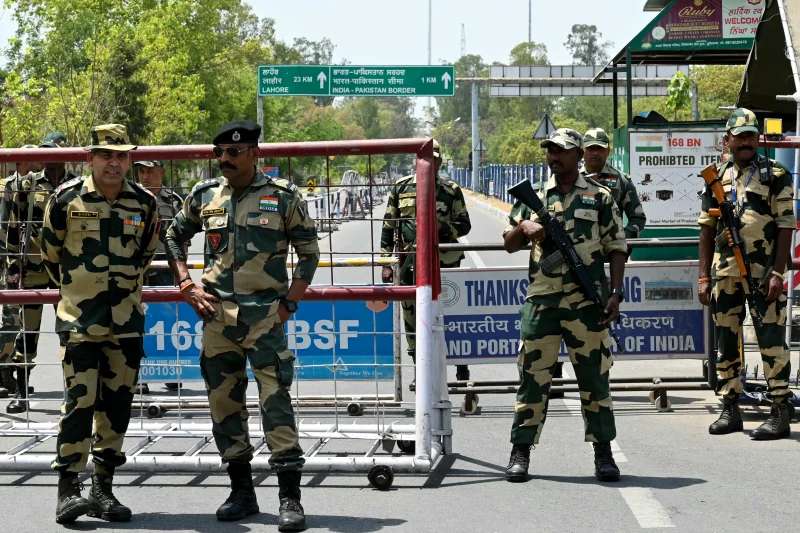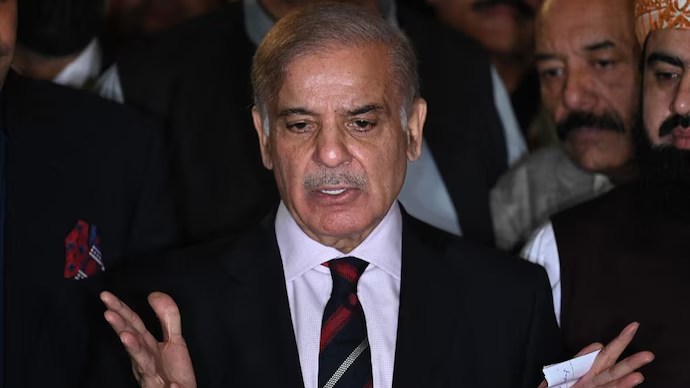Kashmir Tensions Rise After Attack and Border Clashes
Tensions between India and Pakistan surged as their forces exchanged gunfire along the Line of Control (LoC) in the disputed Kashmir region for a second day on Saturday.

The clashes happened across multiple areas, including Leepa Valley, Samahni, and Neelum. They followed a deadly terror attack in Indian-administered Kashmir that killed 26 people, mostly tourists, on April 22.
Both nations, which claim Kashmir but control only parts of it, have blamed each other for starting the violence. This has raised fears of a bigger conflict between the nuclear-armed neighbors.
What Happened?
The recent skirmishes began late Thursday, April 24. Indian military officials said Pakistani troops fired “unprovoked” small arms from several posts along the 740-km LoC. Indian forces responded, and the exchanges continued into Saturday, April 26. No casualties were officially reported. Posts on X also mentioned unconfirmed reports of Pakistan using anti-tank guided missiles (ATGMs) against Indian outposts. These claims have not been officially verified.
The Indian Army described the firing as a violation of the 2021 ceasefire agreement. Pakistan has not officially commented on the incidents.
The clashes came days after a militant attack on April 22 near Pahalgam, a tourist spot in Indian-administered Kashmir. Gunmen killed 25 Indian tourists and one Nepali in a meadow, marking one of the deadliest attacks on civilians in decades.
The Resistance Front (TRF), a group India links to Lashkar-e-Taiba, claimed responsibility. India accused Pakistan of orchestrating the attack, alleging “cross-border linkages.” Pakistan denies any involvement.
Where Did This Happen?
The gunfire exchanges occurred along the LoC, mainly in the Leepa Valley, Samahni, and Neelum areas. The LoC, a heavily militarized frontier, separates Indian-administered Jammu and Kashmir from Pakistan-administered Kashmir.
The Pahalgam attack happened in Anantnag district, about 90 kilometers south of Srinagar, the main city in Indian-administered Kashmir.
Why Did This Happen?
The Pahalgam attack appears to have triggered the clashes. Its scale and the targeting of civilians shocked India.
Prime Minister Narendra Modi’s government vowed to “track and punish” those responsible, accusing Pakistan of supporting terrorism. In response, India took several measures: suspending the 1960 Indus Waters Treaty, closing the Wagah-Attari border crossing, expelling Pakistani diplomats, and downgrading diplomatic ties.
Pakistan retaliated by expelling Indian diplomats, canceling visas, closing its airspace to Indian flights, and suspending the 1972 Shimla Accord, a key dialogue framework.
Water disputes worsened the tensions. Pakistan accused India of releasing large amounts of water into the Jhelum River, raising fears of floods in Pakistan-administered Kashmir.
Prime Minister Shehbaz Sharif called India’s suspension of the treaty an “act of war.” He vowed to respond “with full force” to any diversion attempts. India insisted it was acting within its rights to counter Pakistan’s alleged militancy support.
Kashmir has been a flashpoint between the two nations since 1947. They have fought three wars, two over Kashmir. Each side accuses the other of backing insurgents.
Who Gave the Orders?
No official orders regarding the border clashes have been disclosed. Indian military officials said their forces “responded appropriately” to Pakistan’s firing. This suggests decisions were made at the operational level.
On Pakistan’s side, the chain of command remains unclear. However, Pakistan’s retaliatory steps, like closing airspace and expelling diplomats, followed a national security meeting chaired by Prime Minister Sharif on April 24.
Indian Army Chief General Upendra Dwivedi visited Srinagar on Friday, April 25, to review security, showing high-level oversight. Prime Minister Modi’s public pledge to pursue the attackers “to the ends of the earth” increased pressure on the military to act.
Pakistan’s Official Reactions
Pakistani officials denied any role in the Pahalgam attack and rejected India’s accusations. Prime Minister Sharif offered to cooperate with a “neutral, transparent, and credible” investigation. He emphasized Pakistan’s desire for peace but warned that Pakistan’s forces were “fully prepared” to counter any Indian “misadventure.”

Saeed Qureshi, a Pakistani disaster management official, accused India of deliberately releasing water into the Jhelum River to cause flooding.
Pakistan’s Foreign Ministry has not confirmed or denied the border clashes. It described India’s suspension of the water treaty as a provocative act. Islamabad’s retaliatory measures signal a hardline stance amid domestic pressure to respond strongly.
Are These Reports Official?
Reports of the border clashes are official. Statements from the Indian military and coverage from multiple outlets like The Guardian, Reuters, and PBS News confirmed them.
The Indian Army’s claims of “unprovoked” firing have not been independently verified. Pakistan has not issued a formal response. The Pahalgam attack and diplomatic fallout are well documented, with both governments releasing statements. However, some claims, such as Pakistan’s use of ATGMs, remain unverified.
Photos and Visuals
Official visuals of the clashes are limited due to media restrictions at the LoC. However, agencies shared related images.
AP News published photos of villagers grieving outside the demolished home of Asif Sheikh, a suspected militant linked to the Pahalgam attack, in Monghama village, Tral, on April 25.
Reuters shared images of people carrying baggage at the Attari-Wagah crossing near Amritsar on April 25, showing the border closure.
The New York Times published a photo of Indian security forces patrolling Dal Lake in Srinagar, captured by Reuters on April 25.
These images show the aftermath of the terror attack and increased security but not the clashes themselves.
International Response
The United Nations urged both sides to exercise “maximum restraint.” The U.S. called for calm, with intelligence chief Tulsi Gabbard expressing solidarity with India.
Former U.S. President Donald Trump downplayed the tensions, saying India and Pakistan “will get it figured out,” noting their long history of conflict. Iran’s Foreign Minister Syed Abbas Araghchi offered to mediate, calling the two countries “brotherly neighbors.”
The situation remains volatile. India’s manhunt for the Pahalgam attackers has led to 1,500 detentions and demolitions of suspected militants’ homes. Pakistan’s warnings over water disputes and India’s military exercises, including Exercise Aakraman, heighten fears of further escalation.
Even a minor incident along the LoC could spiral into a larger conflict, especially given both countries’ nuclear capabilities.


 Water Crisis in Pakistan 4 Urgent Letters to India
Water Crisis in Pakistan 4 Urgent Letters to India  Rapper Badshah Faces Backlash Over Dua Lipa Comment
Rapper Badshah Faces Backlash Over Dua Lipa Comment  Virat Kohli ‘Shocked’ After 11 Die in RCB Victory Celebration
Virat Kohli ‘Shocked’ After 11 Die in RCB Victory Celebration  IAS Officer Abhishek Singh Who Quits Job to became Actor
IAS Officer Abhishek Singh Who Quits Job to became Actor  How InnoMake Shoes Make Navigation Safer for the Blind
How InnoMake Shoes Make Navigation Safer for the Blind  Modi Declares Operation Sindoor Ongoing
Modi Declares Operation Sindoor Ongoing